System design
|
Weaponry: There are 2x35 mm weapons on the carriage of each cannon. Weapons sub-assemblies include barrels, the locking mechanisms and the reloading mechanisms (Figure 5). A lubrication system is mounted inside the cradle, in the weapons protection cover and on the upper carriage. It ensures that the moving parts of each weapon are greasing during shooting. To slide on the cradle, each arm is fitted by means of runners and is controlled by the elastic connection: Pull brake (hydraulic) and collector with helical springs. |
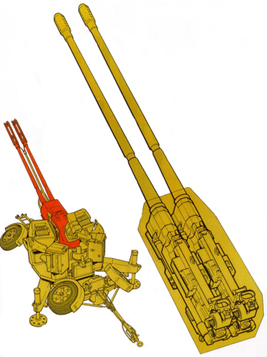 |
|
Automatic loaders: The weapons are powered by automatic loaders mounted on the cradle shoulders on the upper carriage. They move in height and direction with the gun (Figure 6). Each automatic loader is driven by a spring motor which, when necessary, is rearmed manually or electrically. In the mechanism box are transmission systems that align and unload each ammunition blade and automatically lead shots into the weapon. The automatic chargers are supplied with full blades from the ammunition containers secured to the rear of the upper carriage. |
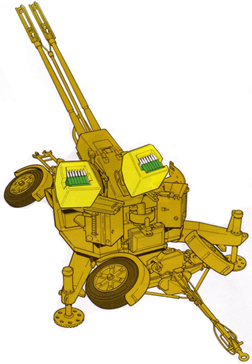 |
|
Upper carriage: The upper part of the gun is the upper carriage. It consists of a platform which is connected to the lower side by a bearing. The platform can move via the bearing in the direction. Attached to the platform are two side walls containing the cradle shoulders (Figure 6). The upper carriage moves in the direction by electric or manual operation. |
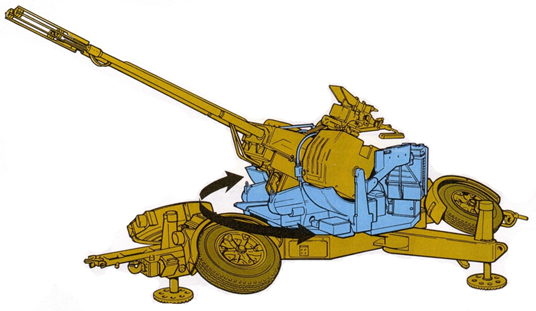 |
|
Sighting equipment: When positioning the cannon, certain steering and height angles must be checked before the entire battery is ready for firing. The panoramic rear window (1) is mounted on the left shoulder. This is used for preliminary orientation and in addition for checks during firing. They can be asked to aim and fire independently. For this purpose, the cannon is equipped with a Ferranti anti-aircraft sight (2). It is mounted by means of an articulated arm on the right-hand side of the platform and operated by the sight-operator. It virtually replaces some facilities that are typically provided by the UCF. Using the Ferranti cannon sight can engage air targets on any flight coordinate. Attached to the Ferranti sight is a viewfinder for sighting and firing against ground targets (3). It is used only for ground targets (Figure 7). |
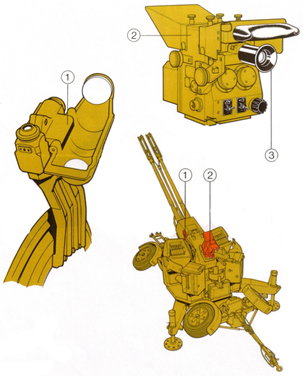 |
|
Control panel: The cannon commander controls the cannon during operation using the control panel. It is connected with a cable so the commander can stay out of the range of the cannon (Figure 8). When the control panel is not in use, or if the sight operator is also the commander of the gun, for any reason, it is placed on the left side wall of the upper carriage. The control panel is equipped with controls and verification lamps for operating the cannon. |
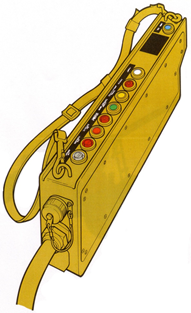 |
|
Lower carriage: The lower section of the tunnel is the lower carriage. It is equipped with 4 wheels with air brakes. Independent front and rear suspension axles give the cannon good road and field capabilities (Figure 9). A drawbar is attached to the front when towing. The movement of the drawbar allows the gun to be moved manually into the pulling position. The rest deck for barrels during transport is fixed to the lower carriage. The lower carriage frame contains, outside the air brake system, the hydraulic and electrical circuits with the control buttons and the corresponding connections. |
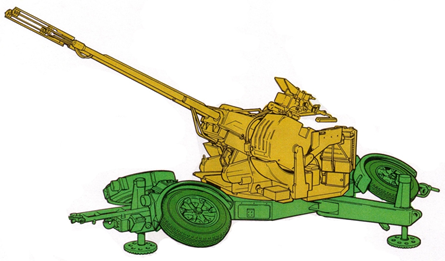 |